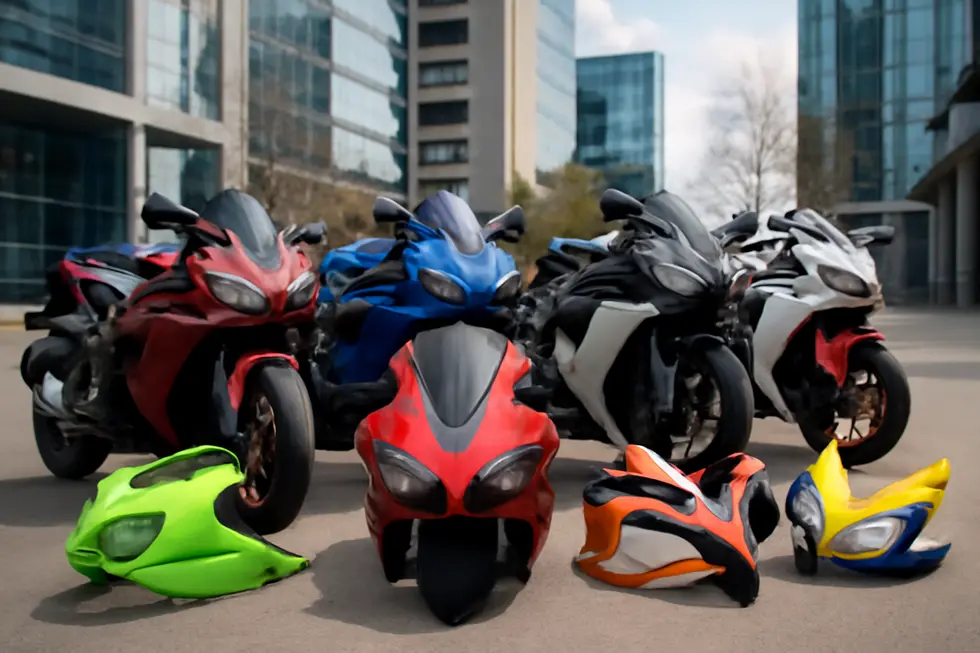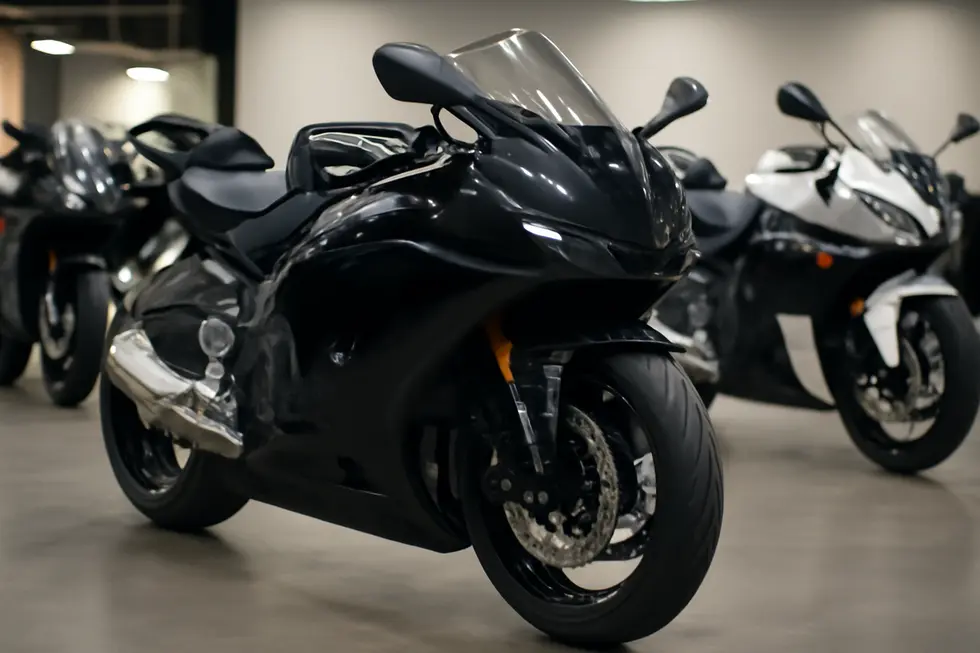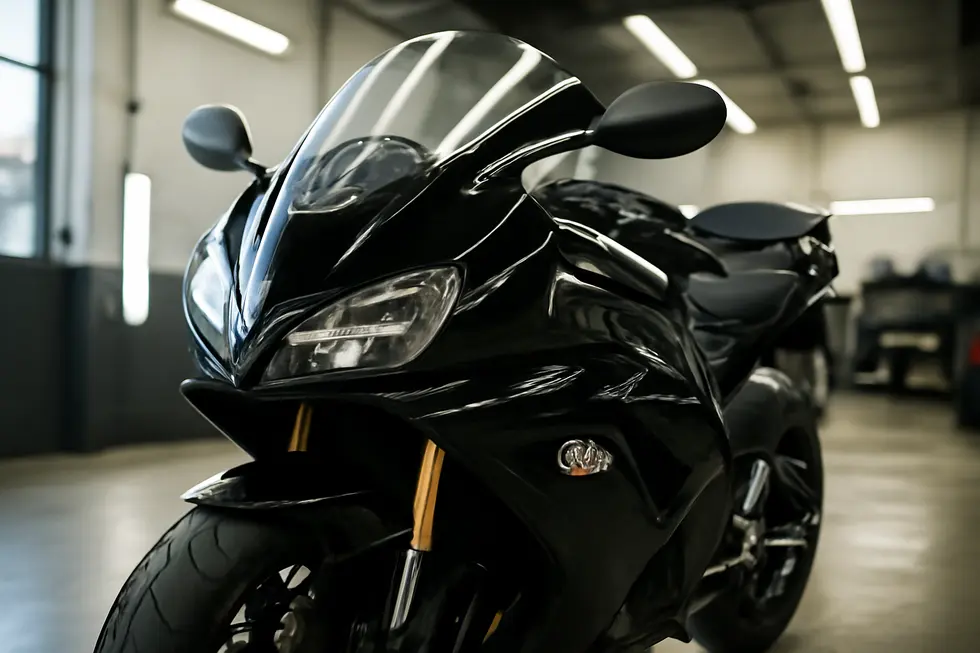Maximizing Motorcycle Potential: The Strategic Role of Lower Fairings for Business Owners
October 1, 2025 | by summitfairings

Introduction
The lower fairing on a motorcycle serves as a critical component that balances functionality and aesthetic appeal, impacting the bike’s overall performance and protection. Understanding its multifaceted role is essential for business owners who operate in the motorcycle aftermarket, retail, or manufacturing sectors. This article delves deeply into the aerodynamic advantages offered by lower fairings and their impact on speed and stability. It explores material choices that define durability and design innovation. Additionally, it examines protective benefits that safeguard key components and the rider. Customization trends and aftermarket dynamics reveal new business opportunities, while a review of how different motorcycle categories utilize lower fairings underscores their widespread application. Each chapter builds insight to empower business decision-making and product development with a comprehensive view of this vital motorcycle feature.
Tables of Contents
Chapter 1: Optimizing Motorcycle Speed and Stability Through Lower Fairing Aerodynamics
- Harnessing Aerodynamic Design to Elevate Performance in Lower Fairing Motorcycles
- Enhancing Rider Comfort and Speed: The Role of Ergonomics and Advanced Materials in Lower Fairings
Chapter 2: Material Composition and Design Innovations Shaping Motorcycle Lower Fairings
- Engineering Materials and Design Strategies Driving Lower Fairing Performance and Durability
- Balancing Strength, Aerodynamics, and Protection: The Design and Material Science Behind Lower Fairings
Chapter 3: Protection and Durability Features of Lower Fairing Motorcycle
- Advanced Materials and Impact-Absorbing Designs Elevating Lower Fairing Crash Resistance
- Maximizing Longevity: Essential Durability Upkeep for Your Motorcycle’s Lower Fairing
Chapter 4: Customization and Aftermarket Trends for Lower Fairing Motorcycle
- Pioneering Materials and Performance-Driven Enhancements Shaping Lower Fairing Customization
- Global Inspirations and Material Innovations Shaping Lower Fairing Customization
Chapter 5: Application of Lower Fairing Motorcycle in Various Motorcycle Types
- Harnessing Aerodynamics and Performance: The Integral Role of Lower Fairings Across Motorcycle Classes
- Enhancing Rider Protection and Comfort Through Lower Fairing Integration
Chapter 1: Optimizing Motorcycle Speed and Stability Through Lower Fairing Aerodynamics
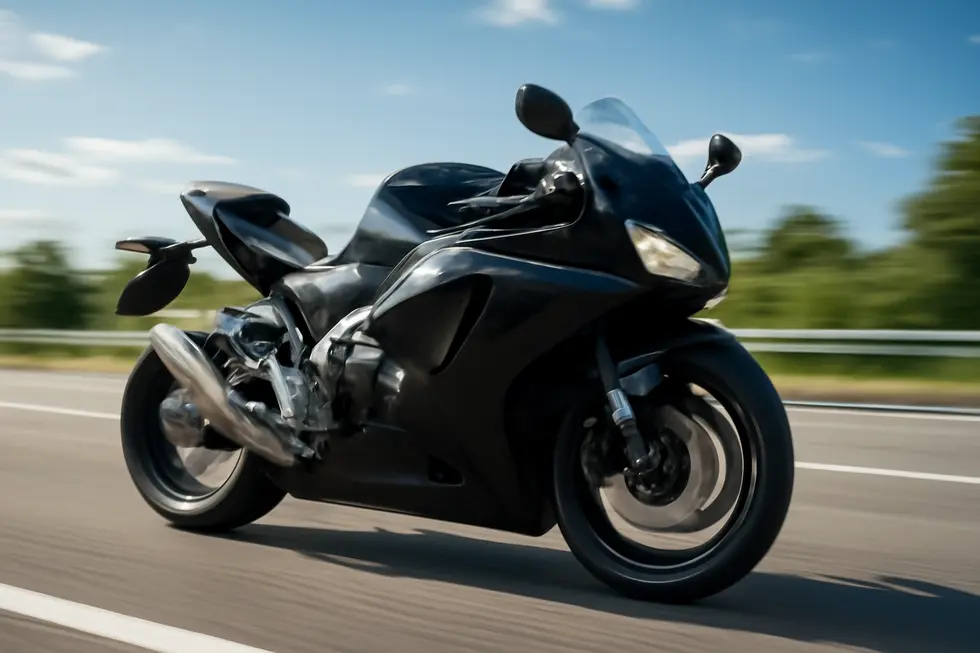
1. Harnessing Aerodynamic Design to Elevate Performance in Lower Fairing Motorcycles
The role of lower fairings in motorcycle aerodynamics extends far beyond mere aesthetics; it is central to enhancing speed, stability, and energy efficiency. At its core, aerodynamic design aims to manage how air flows around the motorcycle’s lower bodywork, particularly around the engine and front wheel area, to minimize drag and turbulence. Drag is a force that directly opposes forward motion and increases exponentially with speed, making streamlined fairing shapes essential for high-performance motorcycles.
Precise shaping of the lower fairing channels airflow smoothly beneath and along the sides of the bike, reducing resistance and improving the motorcycle’s natural ability to slice through the air. This refined airflow control diminishes buffeting and turbulent wakes that can destabilize the bike, especially at highway speeds or during aggressive riding. The result is a more stable ride with reduced effort required to maintain high velocity, which also contributes to fuel efficiency and rider endurance.
Innovations in fairing design borrow heavily from racing technology, where every detail counts. For example, aerodynamic features such as integrated winglets and side shrouds at the lower sections generate beneficial downforce. By pressing the bike slightly closer to the road, the fairings increase traction and cornering precision without compromising speed. These ground-effect principles improve handling in curves and under braking by enhancing tire grip, which is vital in both racing and spirited street riding.
Materials used in lower fairings also impact aerodynamic performance. Lightweight composites allow designers to create complex shapes that maintain structural integrity while aiding airflow management. The intricate contours influence how efficiently the air is directed away from critical components and rider’s legs, reducing fatigue caused by wind pressure. The cumulative effect of these aerodynamic elements supports smoother acceleration and deceleration, better balance, and even noise reduction.
Moreover, lower fairings work hand in hand with rider positioning to optimize aerodynamics. When a rider adopts a tucked stance, the fairing’s streamlined surfaces further reduce wind resistance, maximizing the benefits of the design. This symbiotic relationship between rider and fairing underscores the importance of purposeful integration in motorcycle engineering.
For enthusiasts exploring customization or replacement options, selecting a lower fairing that aligns with aerodynamic goals can transform ride dynamics noticeably. Comprehensive guides on available fairing styles and their performance attributes provide valuable insight for making informed choices that elevate both look and function. By focusing on aerodynamic enhancements specific to the lower section, riders can achieve a tangible leap in handling excellence and speed consistency.
Discover more insights on selecting and optimizing motorcycle fairings by visiting this detailed resource on affordable motorcycle fairings at Summit Fairings.
2. Enhancing Rider Comfort and Speed: The Role of Ergonomics and Advanced Materials in Lower Fairings
The effectiveness of a motorcycle’s lower fairing in boosting aerodynamics is deeply intertwined with rider ergonomics and the innovative materials used in its construction. Rider posture directly influences airflow and drag; a tucked position typical of sportbikes reduces the frontal area exposed to wind, minimizing resistance and enabling enhanced top speeds. In contrast, upright postures common on touring bikes increase wind load but provide greater comfort, thus fairing design must carefully mediate between aerodynamic performance and rider welfare. Lower fairings play an essential role here by guiding airflow around and beneath the bike, reducing turbulence that can cause rider fatigue and affect stability, particularly at high speeds.
Beyond posture, the interaction between rider and motorcycle is optimized through fairing design that complements human movement and comfort. Frame-mounted lower fairings provide more effective wind deflection than bar-mounted setups, limiting handlebar buffeting and vibration transfer that can lead to fatigue on long rides. Such thoughtful ergonomic integration ensures that aerodynamic improvements do not come at the cost of rider endurance or control, blending performance with practical usability.
Material technology underpins these benefits by enabling lightweight, rigid panels that maintain precise aerodynamic shapes without adding excess mass. High-performance composites like carbon fiber optimize strength-to-weight ratios, allowing for sleek contours that slice through the air while withstanding the mechanical stresses of riding. Meanwhile, production motorcycles often utilize durable and repairable plastics that balance cost and function, sometimes incorporating multi-piece fairings with vents or channels engineered to maintain engine cooling without disturbing smooth airflow. This fine-tuned balance between maintaining laminar airflow and dissipating heat is crucial to sustaining engine performance alongside aerodynamic gains.
Additionally, materials contribute to vibration damping, with modern fairing assemblies incorporating components that reduce high-frequency oscillations transferred to the rider. This mitigates fatigue on aggressive rides, complementing the ergonomic elements designed to alleviate physical stress.
The culmination of ergonomic insight and advanced materials leads to motorcycles that perform efficiently and comfortably across varied riding conditions. Sportbikes focus on aggressive rider positioning and ultralight materials to maximize speed and agility, whereas touring models emphasize ergonomic adjustments combined with robust fairings to enhance wind protection without sacrificing comfort. Electric motorcycles particularly benefit from such integration as aerodynamic efficiency directly extends their range, prompting design choices inspired by racing fairings yet adapted for real-world use.
Ultimately, the performance gains from lower fairings depend not only on innovative shapes but also on how those designs harmonize with the human element and materials science. This synergy is fundamental to unlocking true aerodynamic potential while preserving rider comfort and control.
For more insights into the fusion of design and function in motorcycle bodywork, explore authoritative resources such as this guide to motorcycle fairings.
Chapter 2: Material Composition and Design Innovations Shaping Motorcycle Lower Fairings
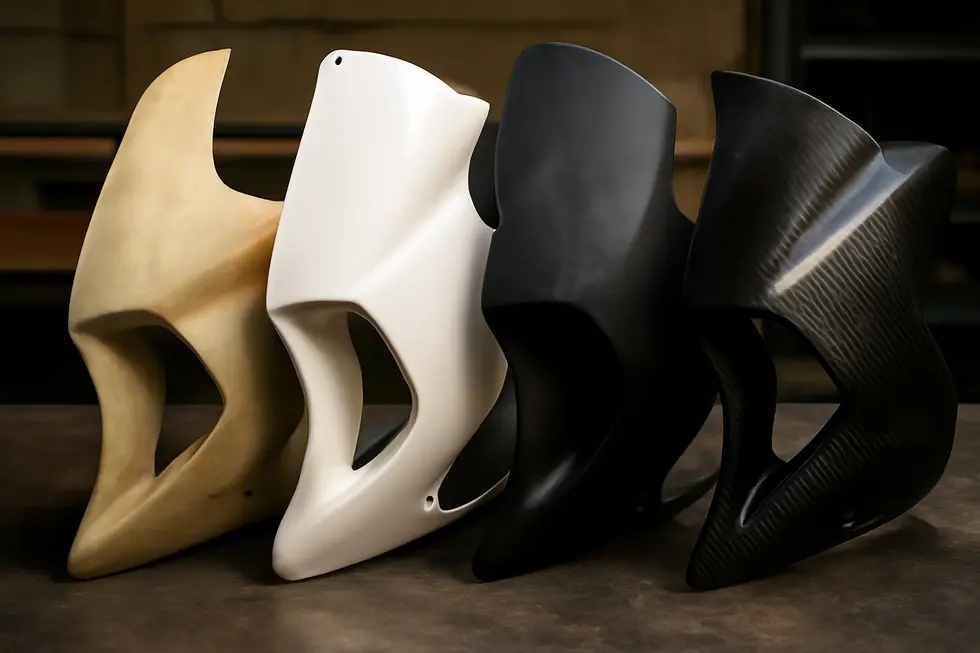
1. Engineering Materials and Design Strategies Driving Lower Fairing Performance and Durability
The lower fairing on a motorcycle stands as a critical fusion of material science and design precision. Its composition and shape directly impact the bike’s aerodynamics, protection, and visual identity. Among the most common materials used, ABS plastic is favored for its combination of durability, impact resistance, and affordability. This thermoplastic’s ease of molding through vacuum forming or injection molding allows manufacturers to create intricate shapes that fit specific motorcycle models precisely. Polypropylene also finds application where flexible toughness is needed; its impact resistance and cost-effectiveness make it a practical choice for fairings expected to endure rough conditions.
Fiberglass offers a different balance, being lightweight yet strong and able to resist environmental factors such as moisture and UV exposure. However, it is generally less impact-resistant compared to ABS. Fiberglass’s ability to be layered and cured into custom shapes makes it popular for both OEM and aftermarket fairing solutions. For high-performance and racing motorcycles, carbon fiber reigns supreme. Its exceptional strength-to-weight ratio allows significant reduction in overall motorcycle weight without sacrificing stiffness or durability. Carbon fiber’s distinctive weave pattern also adds a premium aesthetic, an appealing trait in sportbikes and race machines.
Technological advances in manufacturing shape the final properties of these materials. Injection molding and vacuum forming remain standard processes for plastics, ensuring fairings are flexible enough to absorb minor impacts while maintaining a firm shape under stress. Composite layup techniques for fiberglass and carbon fiber allow for tailored thickness and orientation of fibers, optimizing strength where needed while trimming weight.
The design of lower fairings revolves around aerodynamic efficiency and protective functionality. Fairings streamline airflow beneath the motorcycle, reducing drag and stabilizing the ride at high speeds. Concurrently, they shield critical engine components from road debris, water, and grime. Achieving this balance requires careful design iteration using CAD modeling and precise molding methods like Resin Injection Molding, which produce shells that offer rigidity with slight flexibility. This flexibility prevents cracking and enhances durability.
Customization also plays a role; manufacturers and riders often choose fairings with paint or upholstered finishes to align with the motorcycle’s style. The interplay between material, manufacturing, and design is key to delivering fairings that meet the specific demands of diverse motorcycle types—from track-focused sportbikes requiring lightweight carbon components to adventure-touring models favoring robust polypropylene or ABS components.
Understanding how materials influence both technological performance and rider experience sheds light on why the lower fairing remains an essential component in motorcycle engineering. For those seeking an extensive variety of fairing options and insights into construction materials, exploring a dedicated motorcycle fairings resource can be invaluable in matching parts to specific needs and preferences.
2. Balancing Strength, Aerodynamics, and Protection: The Design and Material Science Behind Lower Fairings
Lower fairings are integral components of motorcycle design, expertly combining material technology with functional engineering to enhance performance, protection, and visual appeal. The choice of material deeply influences every aspect of a lower fairing’s role, from aerodynamic efficiency to durability against environmental hazards. Among the most prevalent materials, ABS plastic is favored for its robust impact resistance and cost-effectiveness, making it a practical option for everyday riders who value longevity and ease of repair. Its ability to absorb minor collisions without cracking is crucial for street motorcycles exposed to unpredictable road debris.
Fiberglass brings a different set of advantages, offering an excellent strength-to-weight ratio along with high chemical resistance. This makes it an ideal candidate for lower fairings on motorcycles that often face corrosive conditions, such as touring or adventure bikes operating in varied environments. Its slightly greater fragility compared to ABS is offset by its lightweight nature, which helps maintain agility while still guarding sensitive engine components.
For manufacturers and enthusiasts seeking peak performance, carbon fiber reigns supreme. Though more expensive, carbon fiber’s exceptional strength combined with ultra-light weight drastically improves aerodynamic potential. Its sleek finish also enhances a motorcycle’s aggressive styling, often critical for sport and racing bikes. The lower weight reduces overall mass, which can translate to quicker acceleration and more responsive handling. This material choice demonstrates how design and composition work hand-in-hand to optimize every facet of motorcycle dynamics.
Beyond material selection, the lower fairing’s shape and contours are meticulously designed to smooth airflow around the bike. Careful sculpting reduces drag and turbulence, which not only supports higher speeds but also contributes to rider comfort by minimizing wind buffeting around the legs and lower body. The streamlined form works to protect both rider and mechanical parts from flying debris, insects, and adverse weather, effectively reducing fatigue during long rides or high-speed travel. Sometimes integrated windshields and heat shields further enhance this protective envelope, controlling airflow to reduce engine heat exposure and improve rider visibility.
The balance struck between aerodynamics, material resilience, and functional protection is what makes lower fairings a critical focus in motorcycle design. Modern development continues to push toward materials and forms that deliver superior performance without sacrificing practicality. Riders looking to upgrade or customize can find a variety of aftermarket options crafted to these principles, allowing fine-tuning of both appearance and effectiveness. For those seeking deeper insights into the array of options and the craftsmanship behind fairing production, exploring dedicated resources on motorcycle fairings provides valuable guidance and ideas.
Chapter 3: Protection and Durability Features of Lower Fairing Motorcycle
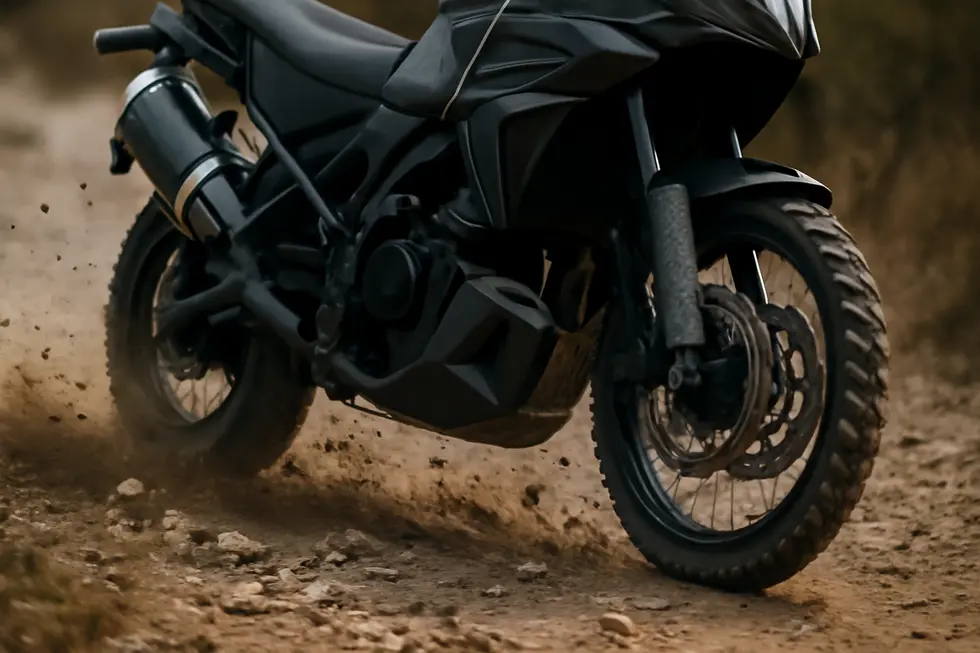
1. Advanced Materials and Impact-Absorbing Designs Elevating Lower Fairing Crash Resistance
The lower fairing of a motorcycle plays a crucial role in shielding vital components like the engine and exhaust from damage during crashes and debris impacts. Achieving enhanced crash resistance requires an intricate balance between selecting the right materials and integrating mechanical protection features that absorb and redirect impact forces.
At the forefront of material choices for lower fairings are impact-resistant plastics such as ABS (Acrylonitrile Butadiene Styrene) and polypropylene (PP). ABS stands out for its toughness and ability to be molded into complex shapes, making it ideal for protective panels that must endure minor collisions and road debris. Polypropylene, meanwhile, offers a cost-effective alternative with respectable durability, often used where affordability and resilience go hand in hand. Both plastics provide a flexible yet sturdy barrier that deflects scrapes and absorbs shocks.
For motorcycles that demand superior performance and weight savings—especially sport and racing models—composites like fiberglass and carbon fiber become preferred options. Fiberglass offers an excellent strength-to-weight ratio and resistance against cracking under stress. Carbon fiber takes this a step further with remarkable lightweight stiffness, allowing the lower fairing to withstand higher impact forces without significant deformation. These materials, though more expensive, enhance crash resistance by dispersing energy efficiently across the panel’s surface.
Complementing these outer panels are key protective components crafted from high-strength aluminum alloys, commonly found in frame sliders and engine guards. These metal parts serve as sacrificial buffers during impacts, mounted near or around the lower fairing to absorb and dissipate energy that would otherwise damage the fairing or critical mechanical parts. Frame sliders, typically made from CNC-machined aluminum or reinforced plastics, project outward from the frame. Upon contact with a surface, they take the brunt of the force, protecting both the fairings and the underlying engine block.
Engine guards, solidly built from robust aluminum alloys, provide rigid barriers safeguarding the lower fairing and engine during tip-overs or low-speed crashes. Their strategic placement and strength reduce the likelihood of costly damage by preventing direct contact of vulnerable areas with the ground.
Moreover, the design of lower fairings themselves contributes to crash resistance. Engineers optimize mounting systems and structural geometry to deflect impacts and minimize stress concentrations. When combined with additional accessories like axle sliders and fork sliders, which protect exposed wheels and forks, these mechanisms support the lower fairing’s integrity indirectly by preventing the entire bike from sustaining cascading damage.
Together, the thoughtful integration of durable plastics, reinforced composites, high-grade metals, and purpose-built crash protection devices creates a comprehensive defensive system. This synergy not only safeguards the lower fairing but also enhances overall motorcycle resilience, offering riders confidence that their bike can endure the hazards of the road or track.
For riders interested in learning more about the variety and selection of fairing materials and designs, exploring resources on comprehensive motorcycle fairings can provide deeper insight.
2. Maximizing Longevity: Essential Durability Upkeep for Your Motorcycle’s Lower Fairing
Maximizing the durability and lifespan of a motorcycle’s lower fairing requires consistent care and attention to key maintenance practices. Positioned beneath the engine, the lower fairing confronts constant exposure to environmental hazards, road debris, vibrations, and UV radiation. Without proper upkeep, these factors can degrade its structural integrity and appearance, diminishing its protective and aerodynamic benefits.
Regular cleaning stands out as one of the most fundamental practices. Using mild soap and water with a soft cloth or sponge gently removes dirt, bugs, and grime without risking surface damage. Abrasive cleaners or harsh chemicals must be avoided, as they can dull paint finishes or weaken composite materials over time. Frequent cleaning not only maintains visual appeal but also prevents accumulated contaminants that could foster micro-cracks.
Routine inspections are equally vital for early damage detection. Checking for chips, scratches, or cracks after every ride allows riders to address minor issues before they escalate. Small scratches can often be repaired with specialized kits designed for the fairing’s material, restoring appearance and preventing moisture ingress. More severe damage, however, calls for professional repair to preserve both functionality and aesthetics.
UV exposure is a silent deteriorator that can lead to fading, brittleness, and eventual cracking of the fairing material. Applying protective sprays formulated to block ultraviolet rays or utilizing motorcycle covers when parked outdoors can help shield the panels. Parking in shaded or covered areas further minimizes these effects and protects against moisture damage, which can deform or delaminate certain composites.
Vibrations generated during riding pose a threat to the mounting hardware securing the lower fairing. Periodic tightening of bolts, screws, and fasteners ensures these panels remain firmly attached, preventing rattling or loss of parts. Over time, worn or stripped fasteners should be replaced to maintain proper fitment.
Material choice plays a critical role in durability and maintenance. ABS plastic fairings offer resilience with good vibration absorption and straightforward repairs, making them popular for aftermarket options. Fiberglass panels are durable but more brittle and prone to cracking, while carbon fiber fairings deliver lightweight strength at a higher cost and require careful handling.
Incorporating these upkeep strategies helps preserve the structural strength and aesthetic integrity of the lower fairing. A well-maintained fairing continues to provide aerodynamic stability, protects engine components from debris, and enhances the motorcycle’s visual dynamism for years to come.
For riders interested in detailed maintenance practices, exploring specialized guides on lower fairing care can offer useful protocols tailored to specific bike models and fairing materials. These resources emphasize thorough cleaning routines, inspection intervals, repair techniques, UV protection, and fastener checks aligned with mileage or ride duration.
For comprehensive insights and options on durable motorcycle bodywork, consider learning more from dedicated sources focused on fairing maintenance and customization, such as those found at Explore the Best Motorcycle Fairings at Summit Fairings.
Chapter 4: Customization and Aftermarket Trends for Lower Fairing Motorcycle
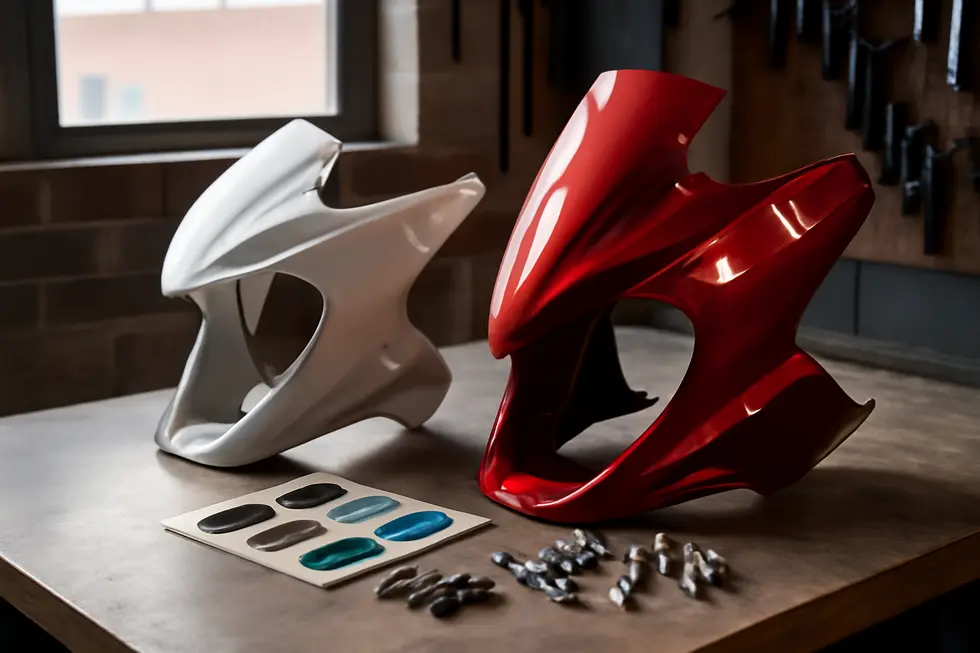
1. Pioneering Materials and Performance-Driven Enhancements Shaping Lower Fairing Customization
The evolution of lower fairing customization is deeply influenced by innovative materials and targeted functional improvements that elevate both performance and aesthetics. Modern advancements have seen a clear shift towards composites like carbon fiber and Kevlar-carbon blends, prized for their exceptional strength-to-weight ratios. These materials dramatically reduce the overall mass of the motorcycle’s bodywork while maintaining durability under demanding conditions. This weight reduction translates to enhanced acceleration, braking responsiveness, and cornering agility, especially critical for sport and racing motorcycles where every gram counts.
Beyond lightweight construction, the adoption of carbon fiber also unlocks aerodynamic refinement opportunities. Its structural rigidity allows designers to craft more intricate and precise fairing contours, shaping airflow to minimize drag and promote stability at high speeds. Integrated aerodynamic elements, such as winglets or ground-effect extensions, are becoming increasingly common in aftermarket lower fairings. Originating in professional racing, these features generate downforce that helps maintain tire contact and rider control during aggressive cornering maneuvers. As these technologies trickle down to street motorcycles, riders gain confidence and improved handling without compromising daily usability.
Another functional dimension in lower fairing customization includes enhanced protection and rider comfort. Fairings now frequently incorporate designs that shield the engine and critical mechanical components from road debris while also reducing wind blast to the rider’s lower body. This dual role strengthens durability and rider endurance on longer rides or at highway speeds. Material innovations here extend to fiberglass and reinforced plastics, which offer a balanced trade-off between affordability, ease of repair, and resistance to impact.
Aftermarket providers have capitalized on these trends by offering a variety of customizable options. Riders can select from numerous finishes, colors, and design motifs that either complement or boldly redefine a motorcycle’s style. The availability of unpainted fairings enables further personalization through custom paint jobs or wraps. Moreover, modular kits allow users to mix and match aerodynamic aids and protective components to suit specific riding styles or performance goals.
This confluence of cutting-edge materials and purposeful design enhancements ensures the lower fairing remains a dynamic canvas for customization. The continuous interplay between weight reduction, aerodynamic efficiency, and rider-focused functionality shapes a vibrant aftermarket landscape. Enthusiasts can explore a wide spectrum of solutions that deliver both immediate visual impact and tangible improvements in ride dynamics. For riders seeking comprehensive customization options in motorcycle fairings, exploring specialist sources offers access to an expansive range of materials and styles tailored to diverse preferences and performance aspirations.
2. Global Inspirations and Material Innovations Shaping Lower Fairing Customization
The customization of lower fairings on motorcycles reflects a vibrant blend of global cultural influences and advancing material technologies, driving both aesthetic evolution and functional enhancement in the aftermarket scene. Riders and builders around the world draw upon diverse stylistic heritages, combining traditional motifs and modern interpretations to reshape their motorcycles’ lower fairings into unique statements.
European customizers, notably within the Harley-Davidson community, frequently employ ABS plastic fairings paired with detailed pinstriping and leather complements. This approach blends craftsmanship with modular design, enabling bolt-on installations that fit a range of models while appealing to riders seeking refined yet adaptable looks. Such efforts transcend singular style labels, inviting enthusiasm from varied rider groups by melding classic and contemporary elements.
Across the Channel, French builders reinterpret timeless motorcycles like the Triumph Bonneville by integrating bespoke lower fairings with carbon fiber elements and intricate acid-etched details. This fusion embodies a sophisticated dialogue between vintage inspiration and avant-garde execution. Meanwhile, in Southeast Asia, Indonesian artisans create hybrid machines known as “Choppy Cubs,” which combine original components with custom alterations. Their ingenuity demonstrates how local context and resourcefulness influence aftermarket trends, shaping designs that resonate within regional identities yet attract international curiosity.
Material innovation plays a pivotal role in recent lower fairing customization. Traditional fiberglass and plastic panels coexist with advanced composites and eco-conscious adhesives that improve durability without sacrificing environmental considerations. New coating technologies emphasize UV protection and resistance to chemical and temperature stress, ensuring that customized parts maintain their appearance and function under rigorous conditions. These advancements not only extend the lifespan of aftermarket fairings but also support sustainable modification practices aligned with modern rider values.
This landscape of stylistic and technological growth is further energized through global motorcycle events such as major festivals and rallies. These gatherings act as vibrant hubs where builders showcase their creativity, exchange ideas, and inspire new trends in lower fairing design. The cross-pollination of regional styles and technical breakthroughs observed at such events accelerates innovation, creating a continuous cycle of evolution within the global custom motorcycle community.
Overall, the customization and aftermarket trends for lower fairing motorcycles demonstrate a rich confluence of worldwide stylistic diversity and material innovation. This synergy not only redefines individual bike identities but also fuels a collective progression that embraces artistic expression, practical performance, and environmental responsibility in equal measure. For riders and enthusiasts eager to explore the broad spectrum of fairing options, resources that emphasize variety and quality abound, providing a gateway to this dynamic world.
Chapter 5: Application of Lower Fairing Motorcycle in Various Motorcycle Types
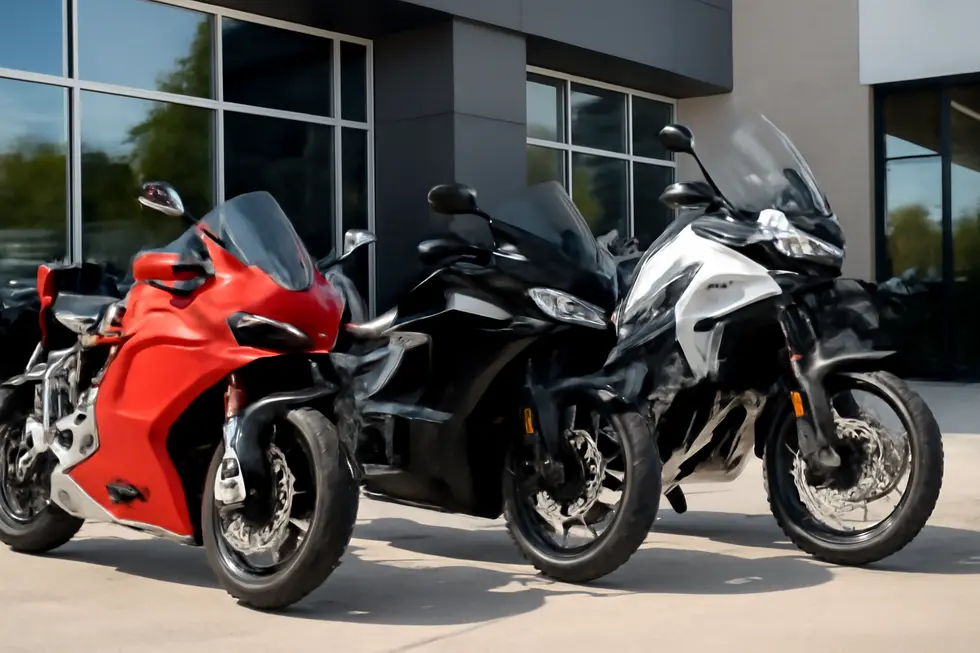
1. Harnessing Aerodynamics and Performance: The Integral Role of Lower Fairings Across Motorcycle Classes
Lower fairings are fundamental components in motorcycle design, serving as much more than mere aesthetic enhancements. Their aerodynamic function starts with expertly managing airflow around the bike’s lower region, where turbulence tends to generate significant drag. By streamlining this airflow, lower fairings reduce air resistance, allowing motorcycles to achieve higher speeds and improved fuel or energy efficiency. This effect is especially critical for high-performance sportbikes and electric models, where every aerodynamic advantage translates directly into speed gains and extended range.
Beyond drag reduction, lower fairings actively contribute to enhanced stability. Carefully sculpted wings and spoilers integrated into the lower section generate substantial downforce, pressing the bike’s tires firmly against the road at high speeds. This increased grip transforms handling characteristics, allowing riders to maintain greater control during aggressive maneuvers. It also plays a crucial role in racing environments where split-second stability can determine success.
Another pivotal aspect of lower fairing design lies in its role in cooling. Efficiently channeling air towards radiators and engine components prevents overheating without compromising aerodynamic integrity. The integration of vents and ducts within lower fairings directs airflow precisely where it is most needed, maintaining optimal operating temperatures even under strenuous conditions.
Handling improvements are further realized through the lower fairing’s subtle influence on airflow near the wheels. By smoothing turbulent eddies around the tires, these panels reduce pressure fluctuations that can destabilize the bike, especially during cornering or rapid speed changes. This refined airflow management manifests as sharper handling and a more communicative ride experience.
Materials used for lower fairings are meticulously chosen to balance durability with minimal weight. Carbon fiber and advanced plastic composites dominate high-performance applications, providing the necessary structural rigidity without burdening the motorcycle with excess mass. This lightweight construction helps maintain agile acceleration and nimble responsiveness, key attributes in both track and street riding.
Finally, the synergy between a motorcycle’s lower fairing and the rider’s posture cannot be overstated. Lower fairings complement the aerodynamic benefits achieved by riders adopting a tucked position, minimizing exposed surfaces and thus significantly decreasing overall drag. This interplay optimizes acceleration and top-end speed, underscoring the integrated nature of motorcycle aerodynamics.
The comprehensive benefits of lower fairings—from drag reduction and downforce to cooling efficiency and weight optimization—are evident across diverse motorcycle types. Whether on electric sportbikes pushing technological boundaries, top-tier racing machines demanding peak performance, or sportbikes refined for precise handling, these aerodynamic elements remain indispensable. For riders and builders seeking both functional performance upgrades and striking design enhancements, understanding the critical role of lower fairings is essential. For further insight into the specialized components that shape motorcycle aerodynamics, exploring expert sources reveals an extensive range of fairing options tailored for performance and style.
Explore the best motorcycle fairings at Summit Fairings
2. Enhancing Rider Protection and Comfort Through Lower Fairing Integration
Lower fairings on motorcycles serve as crucial elements that extend beyond mere aesthetics, significantly enhancing both rider protection and comfort across various motorcycle types. These panels, typically mounted beneath the engine, act as a protective shield for vital mechanical components such as the engine casing, exhaust pipes, and oil coolers. By absorbing minor impacts and preventing direct contact with debris and road grime, lower fairings minimize damage during low-speed falls or tip-overs. This protective feature not only reduces repair costs but also maintains the motorcycle’s operational integrity over time.
Beyond safeguarding the bike’s mechanics, lower fairings contribute to rider comfort in meaningful ways. Their aerodynamic contour smooths airflow around the lower front of the motorcycle, reducing turbulence that would otherwise buffet the rider’s legs and feet, especially at highway velocities. This wind deflection lowers fatigue, enabling longer rides with less strain. For touring motorcycles, this advantage is particularly vital, as riders face extended exposure to wind and weather elements. Additionally, integrated fairings help channel cooling air efficiently to critical components, maintaining optimal engine temperatures while simultaneously keeping excessive heat away from the rider’s lower extremities. This thermal management is advantageous in stop-and-go traffic and warmer climates, enhancing overall ride comfort.
The implementation of lower fairings varies distinctly depending on motorcycle design and intended use. Sportbikes often feature full lower fairings, emphasizing aerodynamic efficiency and high-speed stability, crucial for aggressive riding and racing conditions. Touring motorcycles also utilize comprehensive lower fairing coverage to combine protection with comfort, often integrating storage or ergonomic design elements alongside weather shielding. Conversely, cruisers and classic bikes frequently forego extensive lowers to preserve a traditional, exposed style and simplify maintenance. Naked bikes similarly skip lower fairings to emphasize lightweight agility and urban maneuverability.
Despite their benefits, lower fairings introduce some trade-offs. Added weight may slightly reduce low-speed handling finesse, and their protective qualities cannot replace proper rider gear or dedicated safety devices like crash bars. However, their role in minimizing road debris impact and wind-induced fatigue remains invaluable across multiple riding scenarios.
Ultimately, lower fairings represent a thoughtful balance of protection and comfort enhancements tailored to the needs of different motorcycle categories. They contribute significantly to the riding experience by shielding critical components, smoothing airflow for better stability, and reducing rider fatigue, making them an essential consideration for both manufacturers and riders seeking performance and practicality in their motorcycles.
For a deeper understanding of how motorcycle fairings affect performance and rider experience, see the comprehensive insights available at Discover Affordable Motorcycle Fairings at Summit Fairings.
Final thoughts
Lower fairings represent a strategic investment for motorcycle business owners who aim to enhance product performance, protection, and customer appeal. Their role in improving aerodynamics translates directly to better ride stability and speed, which is critical in sport and racing markets. The diversity of materials fuels innovation in durability and design, aligning with evolving customer expectations. Protective qualities also create value by safeguarding critical mechanical components and riders alike. Moreover, the dynamic aftermarket for lower fairings reveals lucrative customization trends that attract enthusiasts and broaden business opportunities. Recognizing the specific applications across motorcycle types enables targeted marketing and product development. Integrating these insights positions businesses to capitalize on the expanding demand for specialized, high-performance motorcycle components.
Ready to elevate your ride? Summit Fairings delivers premium, custom-fit fairings that blend style and durability. Whether you’re chasing speed or turning heads, we’ve got your bike covered. Don’t wait—transform your machine today. Click, customize, and ride with confidence. Your perfect fairing is just a few clicks away. Act now!
About us
undefined
RELATED POSTS
View all

